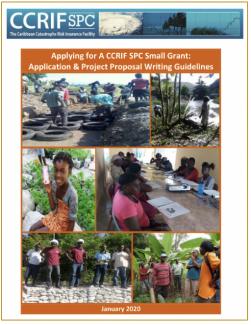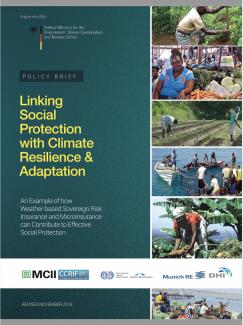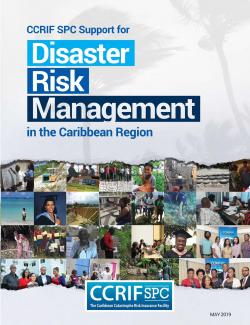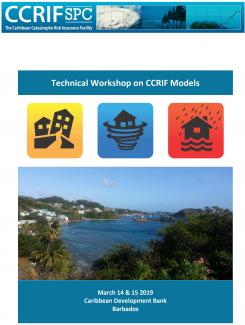
|
Applying for a CCRIF SPC Small Grant: Application & Project Proposal Writing Guidelines This document is a “toolkit” designed for NGOs and CBOs to enable them to prepare and submit project proposals to the CCRIF Small Grants Programme. This programme provides grants between US$5,000 and US$25,000 to NGOs CBOs and academic institutions to implement community-based disaster risk reduction projects. |

|
Policy Brief - Linking Social Protection with Climate Resilience & Adaptation An Example of how Weather-based Sovereign Risk Insurance and Microinsurance can Contribute to Effective Social Protection |

|
CCRIF SPC Support for Disaster Risk Management in the Caribbean Region This publication highlights CCRIF’s support to its members and the people of the Caribbean for disaster risk management through its Technical Assistance Programme. |

|
CCRIF SPC Technical Workshop Manual - Barbados - March 2019 In undertaking the development of the CCRIF parametric insurance coverage, significant investment has gone into developing the underlying catastrophe models. Catastrophe models are essential tools in assessing the risk associated with catastrophe events. The CCRIF model is based on robust datasets all developed within the context of the particular hazards of relevance to the client countries. |

|
The CCRIF Excess Rainfall (XSR) Model Caribbean and Central American countries face a number of primary natural hazard risks, particularly earthquake and hurricane risks. Secondary risks such as those from flooding and landslides, storm surge and wave impacts, and tsunamis also pose significant threat. Additionally, these countries are frequently affected by extreme precipitation events that are often, but not always, induced by tropical cyclones. |


